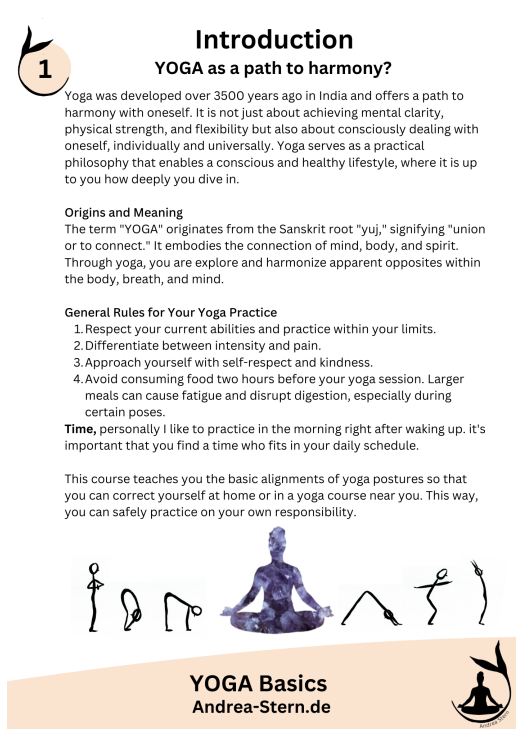Download Handout Yoga Basic 1.
Did you know that before the written word, knowledge was passed down orally? Yoga, has been transmitted from Master to student for over 5,000 years. The word “yoga” finds its roots in the sacred Sanskrit texts known as the Rig Veda, revered for their spiritual wisdom.
The first practitioners of yoga were ascetics and hermits dwelling in the forests of India, engaging in meditative practices aimed at connecting with the divine.
In the late 19th century, Indian monks ventured beyond their homeland, sharing Yoga teachings with the Western world. Those who journeyed to India encountered yogis firsthand, witnessing their spiritual and physical practices. This encounter sparked a global interest in Yoga as a holistic practice, encompassing exercise, meditation, and philosophy.
Today, Yoga has blossomed into a massive industry within health and fitness, with a staggering global market size of USD 107.1 billion in 2023, and still growing! Pretty crazy, right?
But back to the roots, the term “YOGA” originates from the Sanskrit root “yuj,” signifying “union or to connect.” It embodies the connection of mind, body, and spirit. Through yoga, you explore and harmonize apparent opposites within the body, breath, and mind.
Reflecting on our Western lifestyle, you might consider if this holistic approach offered by yoga is precisely what has been missing. Perhaps, it’s time to reconnect with these principles in the hustle and bustle of modern life.
The number one role for your Yoga practice is Respect your current abilities and practice within your limits. This principle of self-respect and self-awareness guides practitioners on their journey toward physical and spiritual well-being.
In essence, yoga serves as a timeless bridge between ancient wisdom and contemporary living, offering a pathway to unite body, mind, and spirit in harmony.
Download Handout Yoga Basic 1
